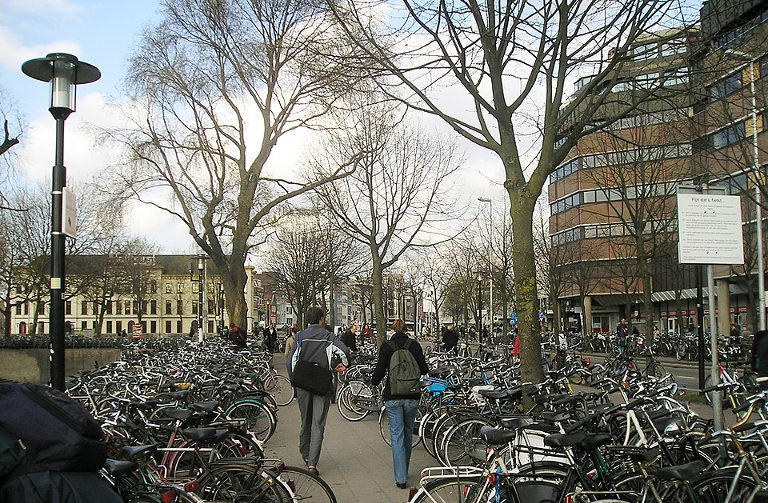A Changing Climate Means A Changing Society. The Island Press Urban Resilience Project, Supported By The Kresge Foundation And The JPB Foundation, Is Committed To A Greener, Fairer Future. This Article Was Originally Published August 9, 2019 in CityMetric.
The past few months have seen an uptick in cycling deaths in cities around the world. In New York City alone, 18 people had been killed in cycling collisions by the middle of 2019, nearly doubling the city’s total for the whole of 2018.
It’s a sad irony that the increase in fatalities comes as countless municipalities have committed to Vision Zero – a plan to eliminate all traffic fatalities and severe injuries.
While the ethos behind Vision Zero is commendable, the vision itself is only as good as the actions taken to support it. The commitment from elected officials needs to be more than just lip service or nothing will get better – in fact, it will just get worse. The first step is prioritising safer space on our streets.
An ever-growing number of cities are building fully separated cycle tracks to help reduce conflict between road users. London’s cycleways are an excellent example of Transport for London’s commitment to getting more people on bicycles while also keeping them safe on that city’s notoriously hostile streets. New York City itself has spent nearly a decade taming its streets with protected cycle lanes. To some extent, these efforts are working, as more people who formerly wouldn’t cycle are giving it a try.
So with all this investment in safer streets, why the increase in cycling deaths? Simply put, the investment is not commensurate with the latent demand, creating gaps that are hot spots for conflict. Intersections remain some of the most dangerous places for cyclists, who are left exposed to conditions that are designed and optimised for car travel. That, often coupled with incomplete cycling networks, means that drivers and cyclists are left to their own devices to navigate the streets. When pitted against each other, there is one obvious “winner”.
Tensions have been rising between road users for decades now, since the first Critical Mass was held in San Francisco in 1992. Transport mode tribalism has contributed to intense confrontations between those on bikes and in cars. For many cycling advocates, the fight for the democratisation of our streets can start to feel hopeless.
But there are signs of history repeating itself, perhaps for the better. Following one of the recent cycling fatalities in New York City, activists took to the streets to demand the City increase its efforts to protect cyclists. They hosted a die-in in Washington Square Park – a macabre, albeit poignant, statement that road fatalities of cyclists is not an acceptable status quo.
The die-in echoed historic demonstrations that took place in Amsterdam in the mid-1970s, as part of the Stop de Kindermoord (stop the child murder) movement. The Dutch uprising followed a dramatic increase in automobile traffic, and a corresponding rash of traffic fatalities that took the lives of 400 children in 1971. Now, just as in the Netherlands nearly 40 years ago, it is the people of New York City who are demanding change.
It’s not just New Yorkers. In San Diego, San Francisco, Boston, Milwaukee, Glasgow, and Wellington, NZ, human beings are literally putting themselves in harm’s way to create a physical divide between cars and those traveling on bicycles. The “People Protected Bike Lane,” a form of tactical urbanism, is becoming an increasing common form of protest. In these cities, adults stand alongside children to demand better conditions, just as Dutch families did in the ‘70’s. It’s a clear statement that the right to space is an equity issue with no age limit.
The fact is that we’ve been here before. Perhaps on different shores, but the conditions are the same. Growing congestion coupled with increased demand on limited space make our streets hostile places. If those who have been elected to serve are truly committed to a Vision Zero future, it needs to be more than just talk. Proactive policies that create safer conditions through a combination of traffic calming, complete networks and separated facilities will go a long way to encouraging cycling without increasing fatalities at the same time.
The question is, can we learn from more recent mistakes and see the lessons that are laid out for us from history? If New York’s die-in shows us anything, it’s that we can take inspiration from the activist spirit of the past to demand better for our cities. Just as the Dutch stood up and ultimately created some of the most cycling friendly streets on the planet, so too can New Yorkers, Londoners and others around the world. The people are asking, now it’s up to our representatives to answer the call.





